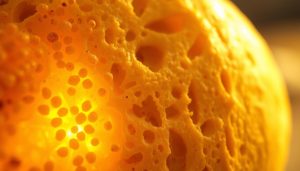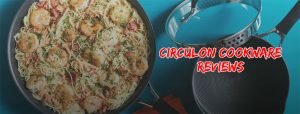Did you know your freezer’s typical -18°C (0°F) setting would turn dessert into a rock-hard block without one key ingredient? The magic lies in freezing point depression – a phenomenon where dissolved substances like sweeteners prevent ice crystals from forming too quickly. This principle explains why premium frozen treats maintain their creamy consistency straight from the container.
Every spoonful of quality dessert contains seven carefully balanced components. Sweeteners do more than satisfy your taste buds – they partner with milk proteins and stabilizers to create that signature smoothness. The right sugar concentration ensures your treat stays soft enough to scoop while preventing gritty crystallization.
Professional chefs and home cooks alike manipulate this food chemistry principle. By adjusting sweetener types and quantities, you control the temperature at which mixtures solidify. Too little, and you’ll chip your spoon. Too much, and you’ll get a sloppy mess. The sweet spot (literally) creates that irresistible texture we all crave.
Key Takeaways
- Sweeteners lower freezing temperatures through molecular interference
- Texture depends on precise balance between sugars and other solids
- Multiple ingredient categories work together for optimal consistency
- Higher sugar concentrations create softer, more scoopable results
- Freezing point science applies equally to kitchen and factory production
- Understanding these principles helps troubleshoot texture issues
Introduction to the Science of Ice Cream
The secret to smooth frozen desserts isn’t just ingredients—it’s science. At -18°C, water would normally form large ice crystals. But your favorite treat stays scoopable thanks to precise molecular engineering.

Understanding Key Ingredients and Their Roles
Seven components create that perfect texture. Fats from dairy coat your tongue with richness. Milk solids build structure while sweeteners work like antifreeze. Stabilizers act as bodyguards against ice formation.
Emulsifiers play matchmaker between oil and water. Without them, you’d get greasy separation. Air bubbles whipped into the mix determine lightness. Each element must balance like instruments in an orchestra.
The Balance Between Chemistry and Physics
Creating frozen desserts involves controlling phase changes. As the mixture churns, physics governs crystal size. Chemistry determines how ingredients interact at different temperatures.
Storage conditions matter as much as recipes. Fluctuating freezer temps cause melt-refreeze cycles. This leads to gritty textures. Professional kitchens use blast freezers to lock in quality.
Your home freezer can achieve similar results. The trick? Understanding how ingredient ratios affect freezing behavior. Master this, and every batch becomes consistently creamy.
How Sugar Affects Freezing Points in Ice Cream
The creamy texture of your favorite frozen treat hinges on precise chemical interactions between sweeteners and water molecules. At 0°C (32°F), pure water solidifies into rigid ice. But dissolved sugars disrupt this process, creating a pliable dessert that scoops smoothly straight from the freezer.

Exploring the Concept of Freezing Point Depression
Sweeteners act like molecular bodyguards, physically blocking water molecules from forming large ice crystals. This phenomenon – known as freezing point depression – explains why your mixture freezes at -5°C instead of 0°C. The smaller the sugar molecules, the more effectively they interfere with crystallization.
Dextrose and fructose demonstrate twice the freezing point-lowering power of sucrose. Their lower molecular weights allow more molecules to occupy the same space, creating stronger interference. This principle lets you predict texture outcomes using the standard freezing point formula: ΔT = Kf × m × i.
Comparing Sugar Types and Their Unique Effects
Commercial producers often blend sucrose with corn starch hydrolysate syrup (3-5%) for balanced results. While sucrose offers moderate temperature reduction, high fructose corn syrup creates dramatic softening. Fructose’s 173% relative sweetness means you need less to achieve both flavor and texture goals.
Some sweeteners behave unexpectedly. 20 DE CSS syrup actually raises the freezing point compared to sucrose. This counterintuitive effect underscores why understanding molecular interactions proves crucial for perfecting recipes. The right combination maintains scoopability without compromising structure.
Enhancing Texture: Sugar’s Impact on Ice Crystal Formation
Your spoon glides through the dessert because sweeteners orchestrate a microscopic ballet. The difference between velvety perfection and a frosty disappointment lies in crystal dimensions invisible to the naked eye. Properly managed, these frozen structures transform your treat into a sensory masterpiece.

Molecular Guardians of Mouthfeel
Sweeteners physically block water molecules from forming jagged ice networks. This interference creates small ice crystals (10-20 micrometers) that melt evenly on your tongue. Higher sugar concentrations thicken the mixture, slowing crystal growth during churning and storage.
Viscous solutions prevent existing crystals from merging into larger, gritty structures. They also reduce water mobility – molecules can’t migrate to enlarge existing formations. This dual action maintains the smooth creamy quality you expect from premium products.
Different sweeteners offer unique advantages:
- Glucose syrup increases viscosity more effectively than table sugar
- Fructose lowers freezing points dramatically but requires careful balancing
- Combining sugars creates synergistic effects for texture control
Commercial producers achieve consistent results by monitoring crystal dynamics throughout production. Home cooks can replicate this precision through measured ingredient ratios and rapid freezing techniques. The goal remains universal: prevent those larger ice crystals that ruin mouthfeel.
Step-by-Step Guide: Adjusting Sugar Levels in Your Ice Cream Mix
Perfecting your frozen dessert starts with mastering sugar ratios in your base mixture. Commercial producers blend 10-12% sucrose with 3-5% corn syrup solids (CSS) to balance sweetness and texture. This combination increases total solids content while preventing excessive sweetness – a trick you can adapt for home recipes.

Measuring and Modifying Sugar Content Effectively
Use a refractometer to measure total solids in your cream mix. Aim for 36-42% solids – higher percentages create smaller ice crystals. Replace 20% of sucrose with CSS or lactose if you want less sweetness but equal freezing point control.
| Sweetener Type | Freezing Point Impact | Sweetness Level | Usage Tips |
|---|---|---|---|
| Sucrose | Moderate | 100% | Base for most recipes |
| CSS (20 DE) | Low | 30% | Adds solids without oversweetening |
| Maltose | High | 40% | Enhances chewiness |
Best Practices for Home Ice Cream Makers
Test modifications in half-cup batches before scaling. Home machines freeze slower than commercial equipment – reduce sugar by 2% if your mixture stays too soft. Keep detailed notes comparing sugar types, freezing times, and final textures.
Remember: Sugar interacts with stabilizers and fats. Increase emulsifiers by 0.2% when using alternative sweeteners. Your ice cream maker performs best when the mix contains 16-20% sugar by weight – measure precisely for consistent results.
Balancing Flavor and Sweetness in Your Recipe
Crafting memorable frozen desserts requires more than just sweetness—it demands precision in flavor balancing. The role of sweeteners extends beyond simple taste enhancement, influencing how other ingredients reveal their character on your palate.

Choosing the Right Sweeteners for Optimal Taste
Each sweetener behaves like a flavor conductor. Fructose delivers a quick burst of sweetness that fades rapidly, letting fruit notes shine. Sucrose builds gradually, creating lingering richness that can overpower delicate spices. This timing difference explains why mango sorbet benefits from fructose, while vanilla bean excels with traditional sugar.
Relative sweetness values act as your recipe compass. Since fructose registers 73% sweeter than sucrose, you’ll use less to achieve identical sweetness. Maltodextrins (6-17% sweetness) bulk up mixtures without cloying effects. Commercial kitchens often blend 60% sucrose with 40% corn syrup solids—this combo maintains texture while preventing flavor masking.
Excessive sweetener causes multiple issues:
- Dominant sugars mute herbal and floral notes
- High concentrations accelerate melting
- Unbalanced recipes develop gritty crystals during storage
For softer ice cream that holds its shape, pair sucrose with glucose syrup. The glucose increases viscosity without adding intense sweetness, creating frozen desserts that scoop easily at home freezer temperatures. Always taste-test mixes before churning—flavors intensify when cold.
Practical Tips for Home and Commercial Applications
The difference between homemade and store-bought textures comes down to controlled crystallization. Professional kitchens use dynamic freezing systems that churn mixtures at -40°F while scraping ice formations every 0.2 seconds. Home cooks can approximate this precision through strategic timing and ingredient adjustments.
Mastering Thermal Dynamics
Commercial blast freezers achieve smoother results by dropping temperatures 50% faster than home appliances. To compensate, pre-chill your machine’s bowl for 24 hours and chill mixtures to 40°F before churning. This reduces crystal growth during the critical first freezing phase.
Liquid nitrogen demonstrations reveal an important principle: faster freezing creates smaller ice structures. While you can’t replicate -320°F temperatures at home, adding 1 tbsp vodka per quart lowers the freezing point slightly. This buys extra time for proper crystal formation.
Engineering Air and Stability
Emulsifiers become essential when reducing sugar content. Lecithin from egg yolks (0.5% by weight) or mono/diglycerides (0.3%) keep fat molecules dispersed. These stabilizers also trap air bubbles – commercial products contain 50% air by volume, while homemade versions average 30%.
Three factors improve air retention:
- Churn mixtures at 32-40°F for optimal viscosity
- Use fresh stabilizers like guar gum (0.1%)
- Balance sugar content between 14-18%
High-end parlors prove texture perfection requires both science and art. Their techniques demonstrate what’s possible when you control every variable – from dasher blade speed to hardening rates.
Conclusion
The art of crafting perfect frozen treats lies in balancing science and taste. Sweeteners do more than sweeten—they shape texture by controlling crystal formation and lowering freezing points. Get the balance right, and your dessert stays scoopable straight from the freezer. Overdo it, and you’ll face melting issues or flavor distortion.
In ice cream production, these additives act as microscopic architects. They limit ice growth while boosting solids content, creating that signature creamy mouthfeel. But there’s a catch: excessive amounts accelerate recrystallization during storage, shortening shelf life.
Mastering this equilibrium lets you produce professional-quality results. Remember, every ingredient percentage impacts both immediate enjoyment and long-term consistency. Your next batch could be the creamiest yet—if you respect the sweet spot.



